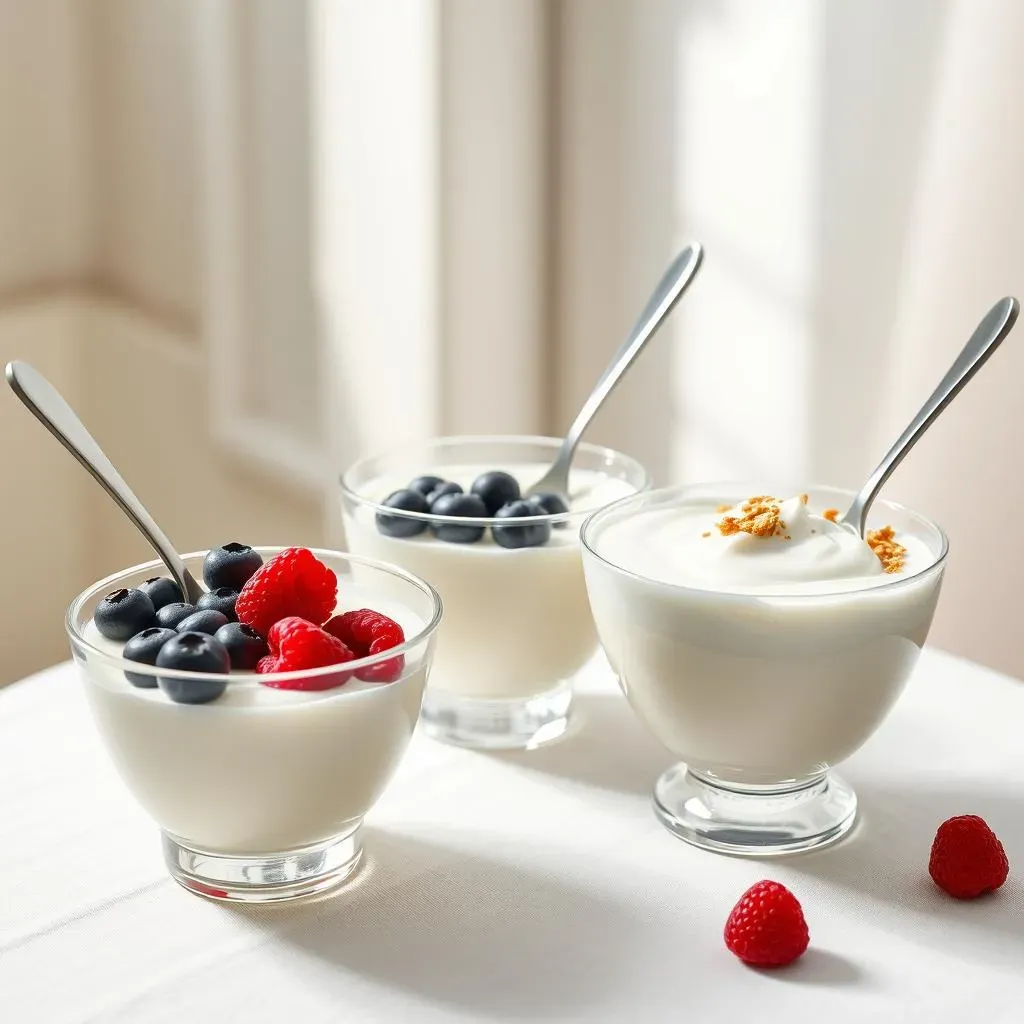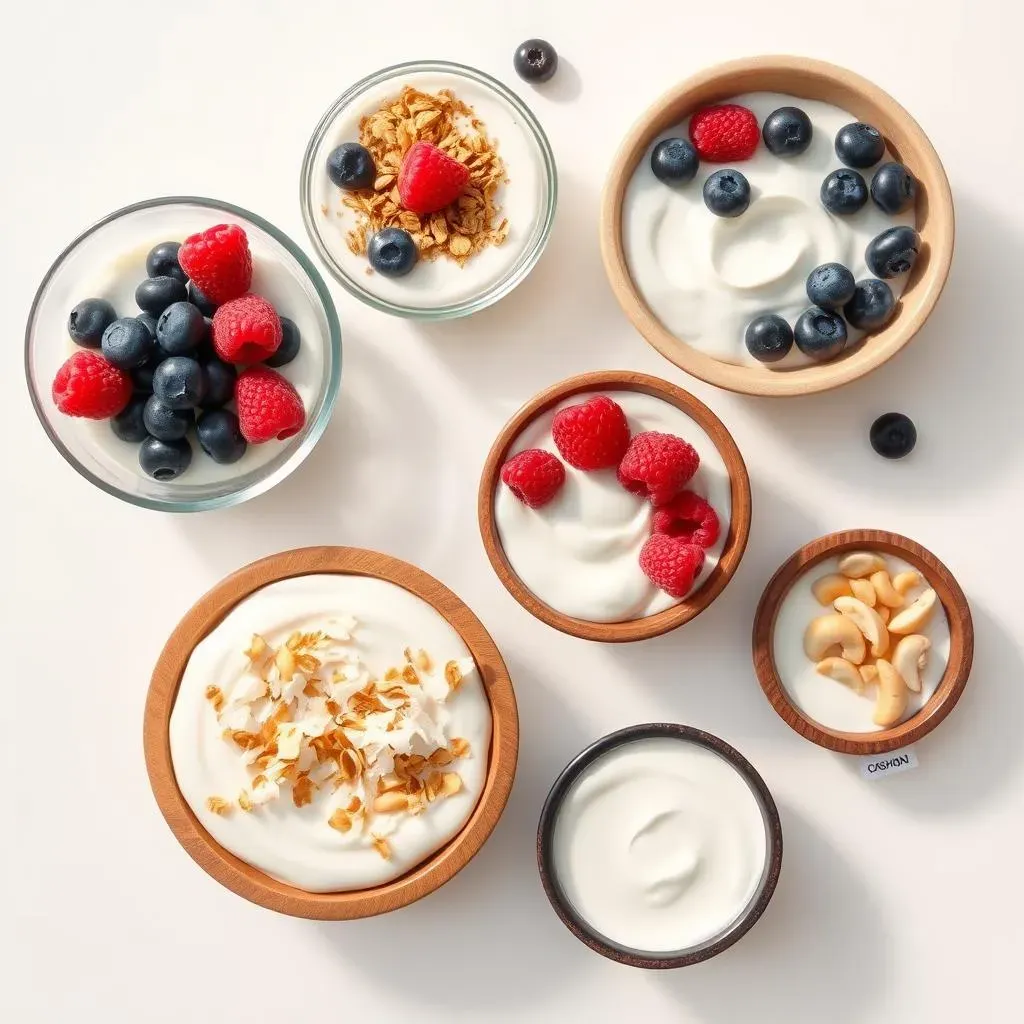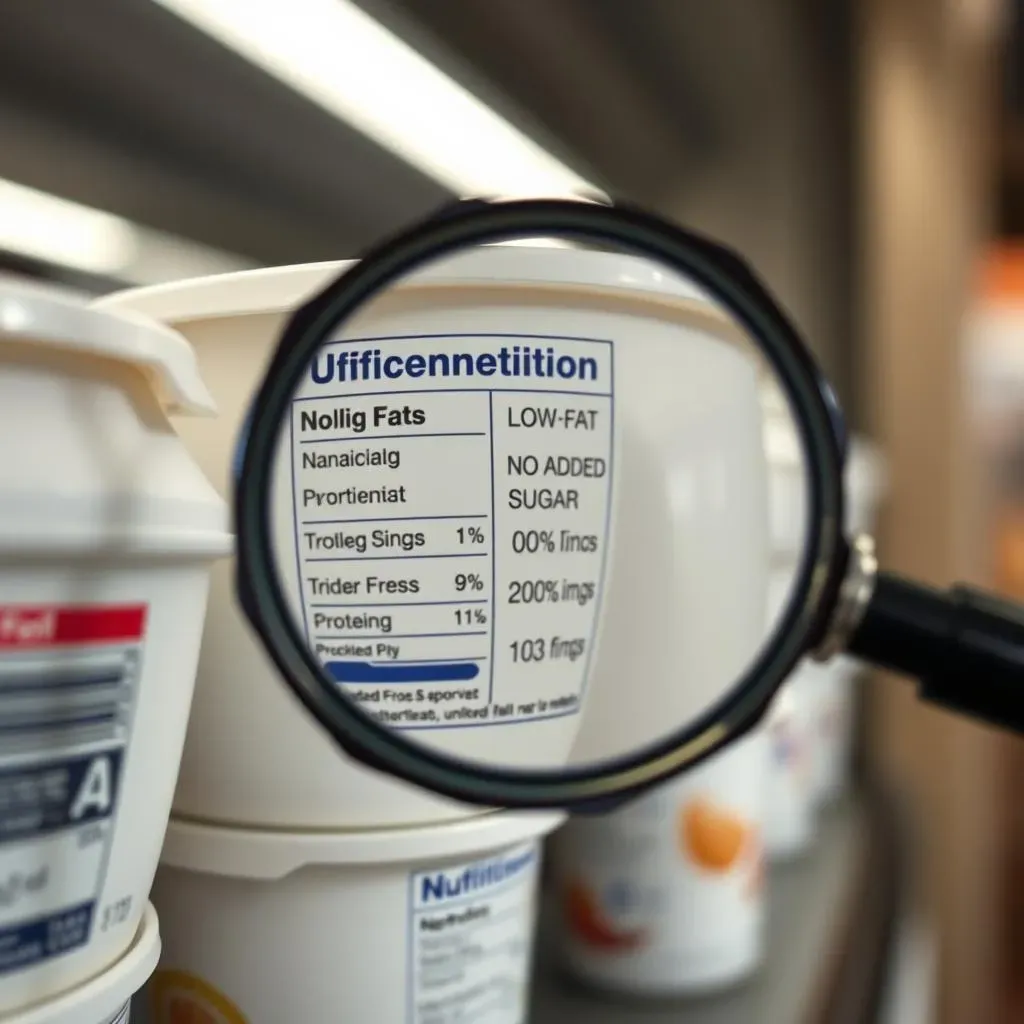Table of Contents
Navigating the yogurt aisle can feel like decoding a secret language. With countless brands and types, from Greek to Icelandic to dairy-free, figuring out what is the healthiest low fat yogurt can be a real head-scratcher. Yogurt offers a ton of potential health benefits, packing probiotics for gut health, calcium for strong bones, and often a good dose of protein for muscle support. But, not all yogurts are created equal. Some are loaded with added sugars, while others skimp on the nutrients that make yogurt a smart choice in the first place.
Top Low Fat Yogurts: Finding the Healthiest Option

Top Low Fat Yogurts: Finding the Healthiest Option
Kefir: The Probiotic Powerhouse
Let's kick things off with Kefir. You might've seen it lurking in the yogurt section, but it’s technically a fermented milk drink. Think of it as yogurt's cooler, more adventurous cousin. What sets kefir apart is its crazy high probiotic count. We're talking a wider variety of beneficial bacteria than most yogurts can even dream of. Plus, it’s often packed with vitamin D and calcium, making it a nutritional superstar. And here's a cool fact: because of the fermentation process, many people who are lactose intolerant can actually tolerate kefir! It’s a win-win.
Strained Yogurts: Skyr and Greek Yogurt
Next up, we have the strained yogurt squad: Icelandic Skyr and Greek yogurt. These guys are the protein kings of the yogurt world. The straining process removes a lot of the whey, resulting in a thicker, creamier texture and a super-concentrated dose of protein. Why is protein important? It helps you feel full and satisfied, which can be a lifesaver when you're trying to manage your weight. It's also crucial for muscle recovery after a workout. The downside? The straining process also removes some of the calcium, so they don't pack quite the same bone-building punch as kefir.
Now, here’s a quick comparison:
Yogurt Type | Protein Content (per serving) | Probiotics | Calcium |
|---|---|---|---|
Kefir | 8-11 grams | High Diversity | Excellent Source |
Icelandic Skyr | 15-20 grams | Moderate | Good Source |
Greek Yogurt | 15-20 grams | Moderate | Good Source |
Comparing Yogurt Types: Protein, Probiotics, and More

Comparing Yogurt Types: Protein, Probiotics, and More
Unstrained Options: Australian and Traditional Yogurt
Alright, let's talk about the unstrained yogurts: Australian-style and traditional yogurt. These are your more everyday, classic options. They still deliver those good-for-you probiotics and calcium, but generally pack less protein than the strained varieties. Think of them as the reliable, all-around players on the yogurt team. They're great for a quick breakfast or snack, especially when you jazz them up with some fruit and granola.
Now, what's the difference between Australian and traditional? Australian-style yogurt is known for its incredibly smooth and creamy texture, almost like a custard. Traditional yogurt can vary more in texture, but it's usually a bit thinner than the Australian style. Both are solid choices, it really just comes down to personal preference.
Dairy-Free Delights: Soy, Coconut, and Cashew Yogurt
For those steering clear of dairy, there's a whole world of plant-based yogurts to explore! Soy milk yogurt is often the closest in terms of nutritional profile to dairy yogurt, providing a good source of protein and calcium. Coconut milk yogurt brings a tropical twist with its creamy texture and distinct flavor, but it tends to be lower in protein. Cashew yogurt is another delicious option, offering a slightly nutty flavor, but again, protein content is something to keep an eye on.
When you're going dairy-free, it's extra important to check the label for added sugars and fortified nutrients. Some brands add extra calcium and vitamin D to make their yogurts more nutritionally comparable to dairy versions. Here’s a quick snapshot:
Yogurt Type | Protein Content (per serving) | Source |
|---|---|---|
Soy Milk Yogurt | 5-10 grams | Soybeans |
Coconut Milk Yogurt | 0-2 grams | Coconut Milk |
Cashew Yogurt | 2-3 grams | Cashews |
Pro Tip: Plain, unsweetened versions are always your best bet to minimize added sugars!
Decoding Yogurt Labels: What to Look for in Healthy Low Fat Yogurt

Decoding Yogurt Labels: What to Look for in Healthy Low Fat Yogurt
Alright, let's get down to brass tacks: decoding yogurt labels. You’re standing in the aisle, staring at a wall of options, and trying to figure out what is the healthiest low fat yogurt. Don't sweat it, I'm here to help. The first thing I always zero in on is the added sugar. Yogurt is naturally a little tart, so many brands pump it full of sweeteners to make it more palatable. But all that extra sugar can quickly negate the health benefits. Aim for yogurts with little to no added sugar – plain, unsweetened varieties are your best friend. You can always add your own fruit, honey, or a touch of maple syrup to control the sweetness yourself.
Next up, let's talk fat content. While we're focusing on low-fat options, it's worth noting that the conversation around fat is evolving. Some studies suggest that full-fat dairy might not be as bad for you as we once thought, but for the purpose of this article, we are focusing on low-fat. So, what's the sweet spot? Look for yogurts that are labeled "low-fat" or "non-fat." But don't assume that low-fat automatically equals healthy! Some brands compensate for the lack of fat by adding even more sugar or artificial ingredients to improve the taste and texture.
Now, let's talk protein. We already know that protein keeps you full and helps with muscle recovery, so you definitely want to prioritize this nutrient when choosing a yogurt. Greek and Icelandic yogurts are the superstars in this category, packing a serious protein punch. But even regular yogurts can contribute a decent amount. Aim for at least 5 grams of protein per serving, but ideally, you want to go for 10 grams or more.
Lastly, if you're lactose intolerant, pay close attention to the lactose content. Some yogurts, particularly Greek and Icelandic varieties, are lower in lactose due to the straining process. You can also find lactose-free yogurts made from alternative milks like soy, almond, or coconut. With a little label sleuthing, you can find a yogurt that fits your dietary needs and keeps your gut happy.
- Added Sugars: Keep them low!
- Fat Content: Opt for low-fat or non-fat.
- Protein Content: Aim for at least 5 grams per serving, 10+ is ideal.
- Lactose Content: Choose lower-lactose or lactose-free options if needed.
Beyond the Spoon: Creative Ways to Enjoy Yogurt Daily

Beyond the Spoon: Creative Ways to Enjoy Yogurt Daily
Smoothie Superstar
let's ditch the spoon for a sec and talk smoothies! Yogurt is the unsung hero of the smoothie world. It adds a creamy texture, a boost of protein, and those all-important probiotics. Forget those sugary smoothie shop concoctions – you can whip up a healthy and delicious smoothie at home in minutes. My go-to recipe? A blend of frozen berries, spinach (trust me, you won't taste it!), a scoop of Greek yogurt, a splash of almond milk, and a drizzle of honey. It's the perfect way to start your day or refuel after a workout. Plus, you can customize it to your heart's content – add chia seeds for extra fiber, nut butter for healthy fats, or even a little cocoa powder for a chocolatey treat.
Here's a fun fact: Yogurt can actually help your body absorb more nutrients from the fruits and veggies in your smoothie! The probiotics in yogurt break down the cell walls of plants, making it easier for your body to access all those vitamins and minerals. So, go ahead and load up on the greens – your gut will thank you!
Savory Sensations: Yogurt in the Kitchen
Now, let's get a little adventurous and explore the savory side of yogurt. Forget those heavy, mayo-laden dips and dressings – yogurt is a light and tangy alternative that will add a burst of flavor to your meals. I love using Greek yogurt as a base for tzatziki sauce, a classic Mediterranean dip made with cucumber, garlic, and dill. It's perfect with grilled chicken, veggies, or pita bread. You can also use yogurt to make a creamy salad dressing, a marinade for meat, or even a topping for tacos. The possibilities are endless!
Here's a table with some savory ideas:
Dish | Yogurt Application |
|---|---|
Grilled Chicken | Marinade with yogurt, lemon juice, and herbs |
Salad | Creamy dressing with yogurt, vinegar, and spices |
Tacos | Topping instead of sour cream |
Don't be afraid to experiment and get creative. Yogurt can add a unique twist to your favorite dishes and help you sneak in some extra protein and probiotics along the way.
The Healthiest Yogurt: A Quick Review
So, where does that leave us in the quest for the healthiest yogurt? Ultimately, the best choice depends on your individual needs and preferences. Kefir stands out for its probiotic diversity and high calcium content. Greek and Icelandic yogurts are protein powerhouses, while soy yogurt offers a comparable dairy-free alternative. By prioritizing plain varieties, scrutinizing labels for added sugars, and considering your personal dietary requirements, you can confidently choose a yogurt that supports your health goals and satisfies your taste buds. Enjoy experimenting with different types and incorporating yogurt into your meals for a delicious and nutritious boost.
